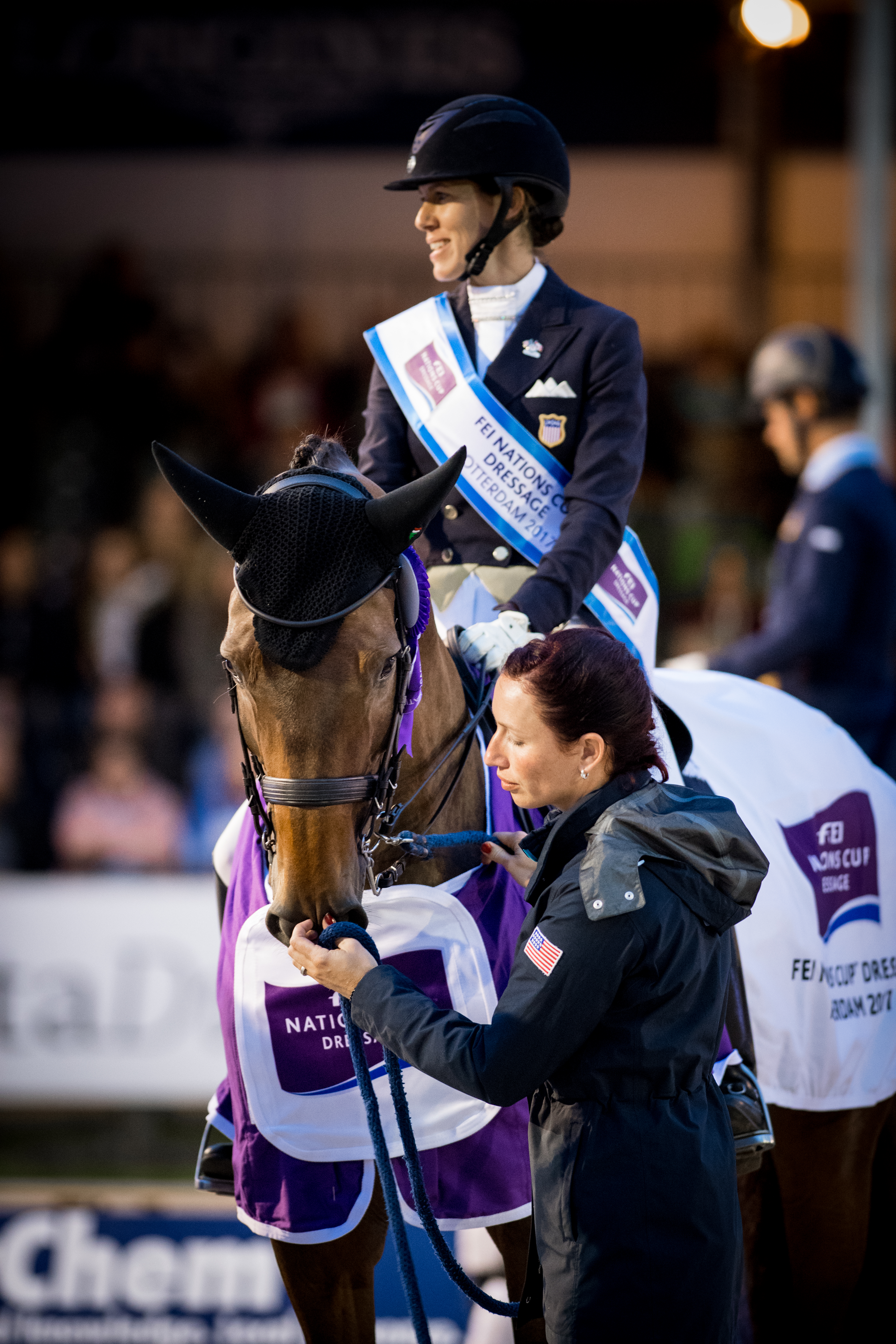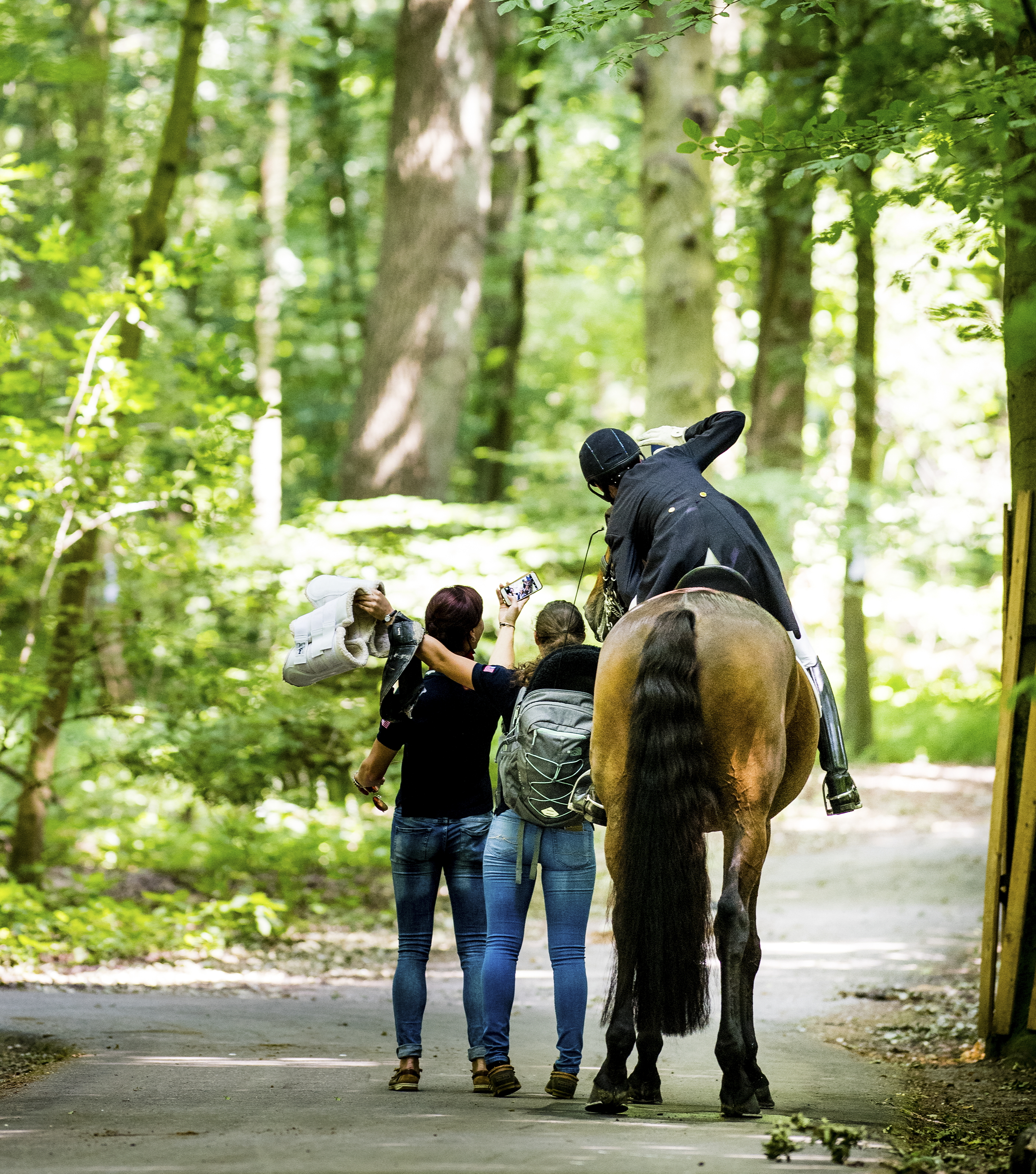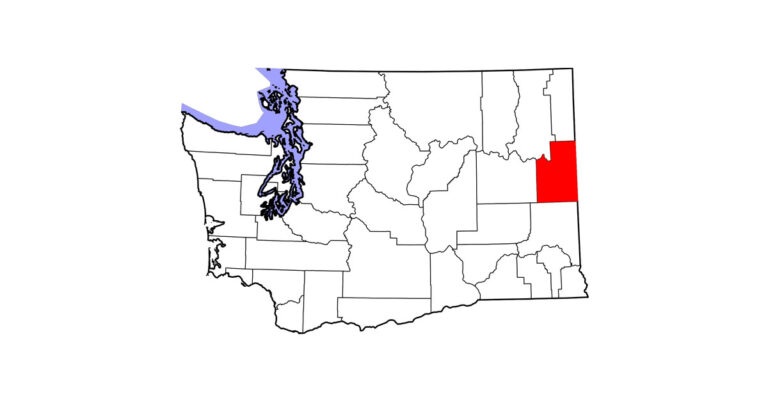
Nickname: Lono
Occupation: Dressage
Hometowns: Haymarket, Virginia, and Wellington, Florida
Basic stats: 13-year-old, 17.2-hand Danish Warmblood gelding
Sire: De Noir
Dam: Lorani
Lonoir’s people
Owners: Olivia Lagoy-Weltz and Mary Anne McPhail
Rider: Olivia Lagoy-Weltz
Groom: Nicole Ardito-Ng
Assistant groom/Exercise rider: Micah Andrews
Background: When Olivia imported Lono from Denmark as a 7-year-old, he was extremely sensitive both on the ground and under saddle. Flags snapping in the wind especially set him off, she says. “We’d turn across the diagonal, for example, to do an extended canter and he’d squeal and accelerate, then launch into the air at X.”
In the barn, Lono was initially very head-shy and frequently pulled back on the cross-ties. Olivia spent a long time teaching him to lower his head to be bridled. She also learned to choose his support team carefully. “He’s very specific about how he’s handled. Any new vet or farrier has to earn his trust.”
As Lono matured, his confidence grew and his behavior improved dramatically. He now adores attention from those within his trusted circle. “He loves going on the road and being the only horse that we’re focused on. He knows he’s special.”
Now that he has reached the top level of the sport, Olivia competes him only as much as is necessary to qualify for major international competitions. “I don’t want to put any unnecessary wear and tear on him,” she explains. After the Florida season or trips abroad, she gives him three weeks off from training. “But then he gets bored,” she says, so she gradually brings him back into work.
Daily routine: Lono thrives on a predictable routine and a simple training program. In addition to ringwork, Olivia rides him almost daily on a hilly loop around her 20-acre property. “It’s good for his brain and his body,” she says.
Lono’s team does lots of carrot stretches to keep his body loose. They also “really dig in” when they curry him to relax and loosen his muscles. He particularly enjoys this on the gluteal muscles of his rump. “He will wiggle around and position you where he likes to be rubbed,” Olivia says.
In Virginia, Lono is turned out for three to four hours each day. He doesn’t go out for quite as long in Florida, because it’s sandier and less grassy, so he gets bored more easily. He does, however, love to roll in the deep sand in the roundpen.
During their 2017 Europe tour, in light of multiple variables—the cooler weather, foreign barn and unfamiliar situation—Olivia decided not to turn Lono out. His team hand-walked and grazed him frequently instead.
Nutrition: When Lono was younger, avoiding high-starch food sources was critical both for controlling his excitability and for treating a bout of ulcers. Under the guidance of a local nutritionist, Olivia found a high-fat, high-fiber grain for him. He’s an easier keeper now, so her focus is more on maintaining his strength and endurance. She also continues feeding him some of the products that are allowed in Europe so she doesn’t have to disrupt his diet when he travels abroad.
Lono eats three meals a day: a combination of Nutrena ProForce Fuel and Cavalor FiberForce, plus Platinum Performance CJ and Progressive NutritionProAdvantage Grass Formula pellets. He has 24/7 access to a hay mix of orchard grass and timothy served in a NibbleNet, which reduces waste. During less intense training periods, his lunch is a light mash.

Other care: “I try hard not to have him live in stable bandages,” says Olivia. After hard workouts at home, Nicole cools his legs with ice boots, then leaves them bare the rest of the day. When the weather makes horses’ legs get puffy—as it does sometimes in Virginia—she applies stable wraps. In Florida or on the road, she often puts either a poultice or cooling gel under his wraps—or uses Back on Track Quick Leg Wraps, with nothing underneath them.
In addition to his routine stretching and massage, Lono also receives a gentle chiropractic treatment (nothing aggressive that might alarm him) about once a year.
One of the most critical components of Lono’s care routine is his shoeing. “He has two different front feet: one upright and one flat,” Olivia explains. To keep him sound and healthy, it’s important to make the two feet as similar as possible without disturbing each one’s natural balance. Periodic X-rays help to ensure that his breakover points are biomechanically ideal. “That way we can check that what his feet look like on the outside matches the angles of the bones on the inside.”
Major Accomplishments
Won the small tour CDI (Prix St. Georges, Intermediate I and Intermediate Freestyle) at Dressage at Devon, 2014 · Won the small tour at the 2015 Adequan Global Dressage Festival · Team gold medal, CDIO Wellington Nations Cup, 2015 · U.S. traveling team alternate, 2016 Pan American Games · Multiple 2017 Grand Prix and Grand Prix Special wins in Wellington, the Stillpoint Farm FEI Nations Cup CDIO*** and the Dutta Corp. U.S. Dressage Festival of Champions · Nations Cup team gold in Rotterdam, the Netherlands, 2017 · Nations Cup team silver in Aachen, Germany, 2017.
This article was originally published in the January 2018 issue of Practical Horseman.










